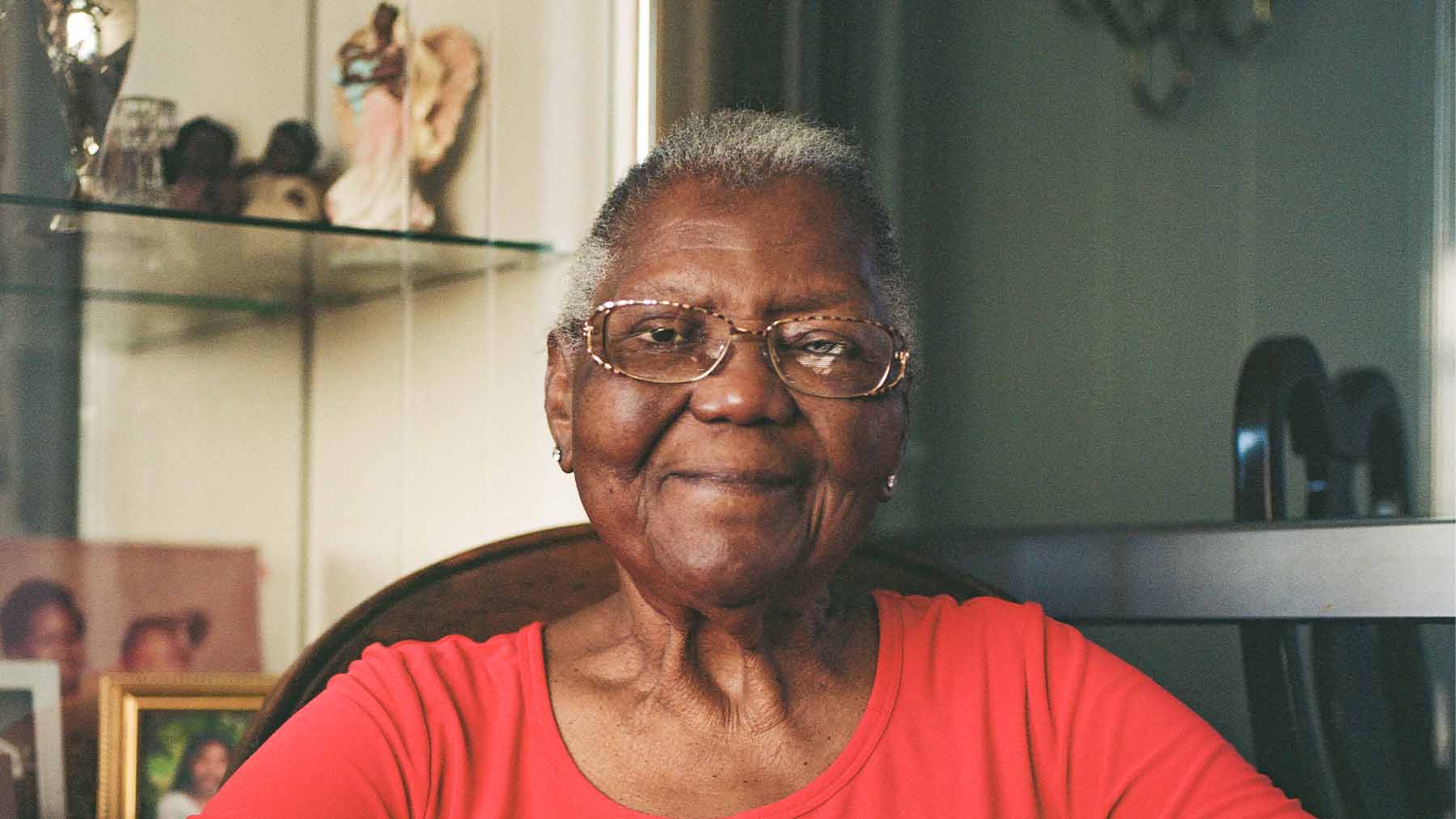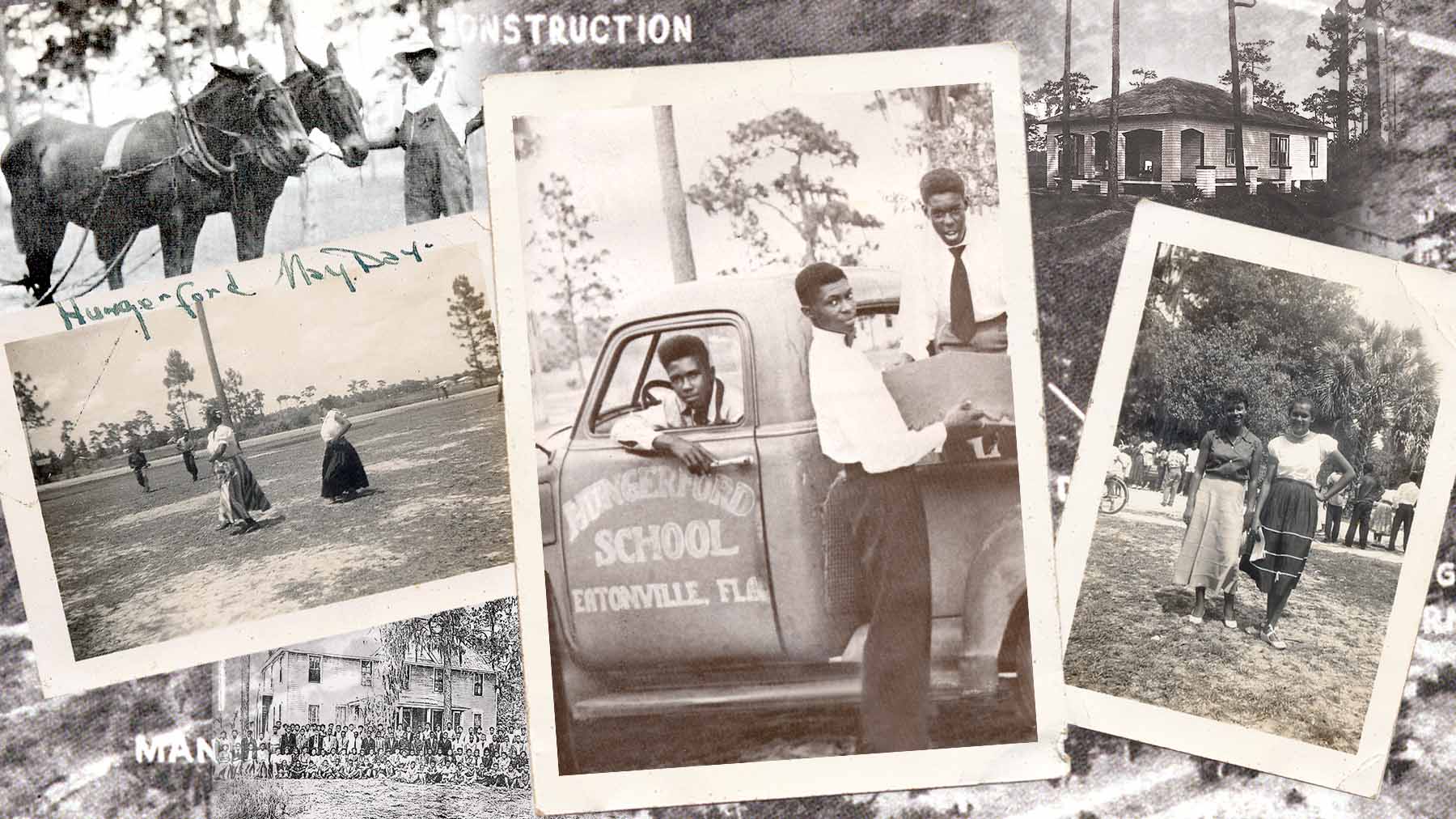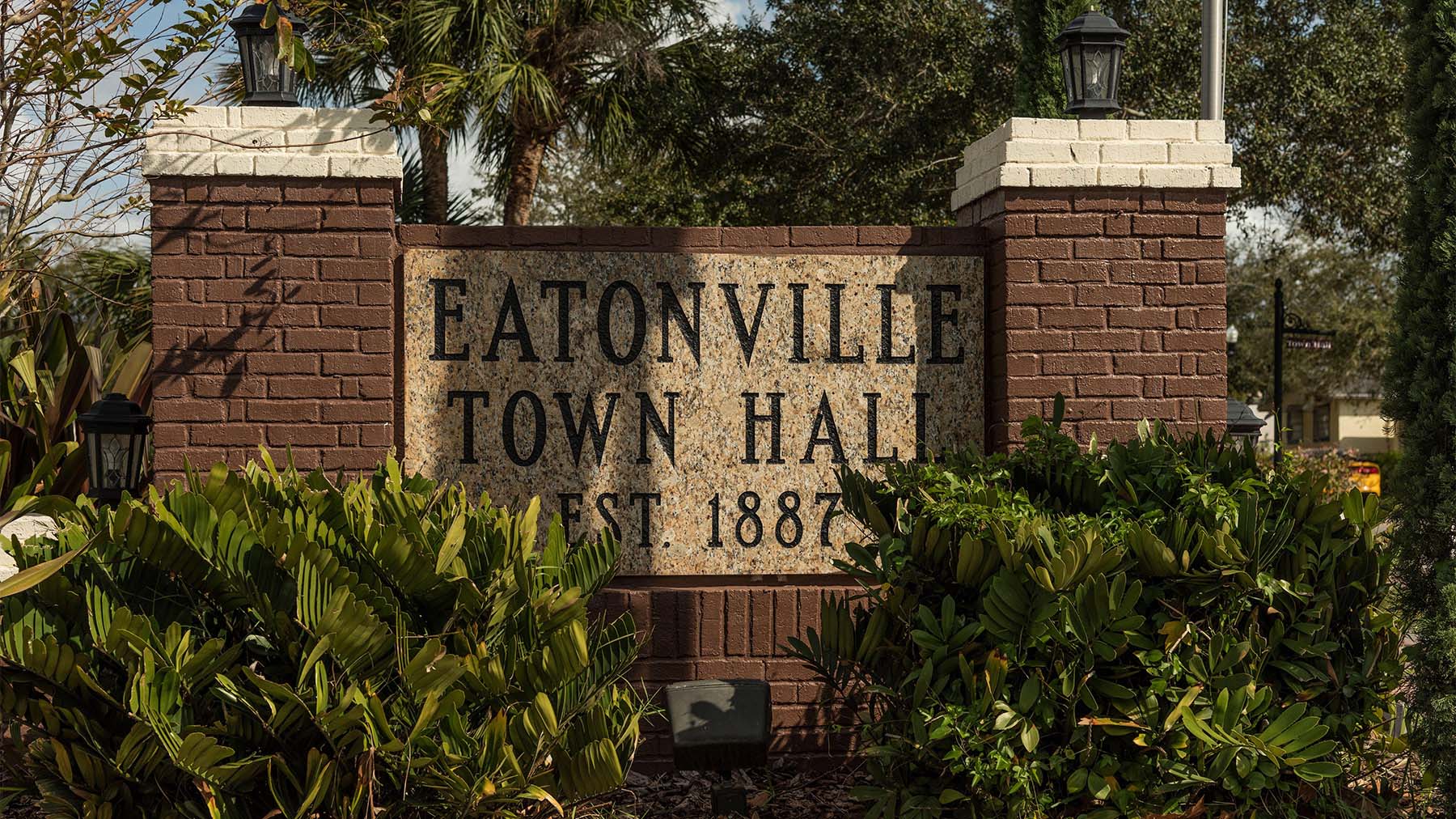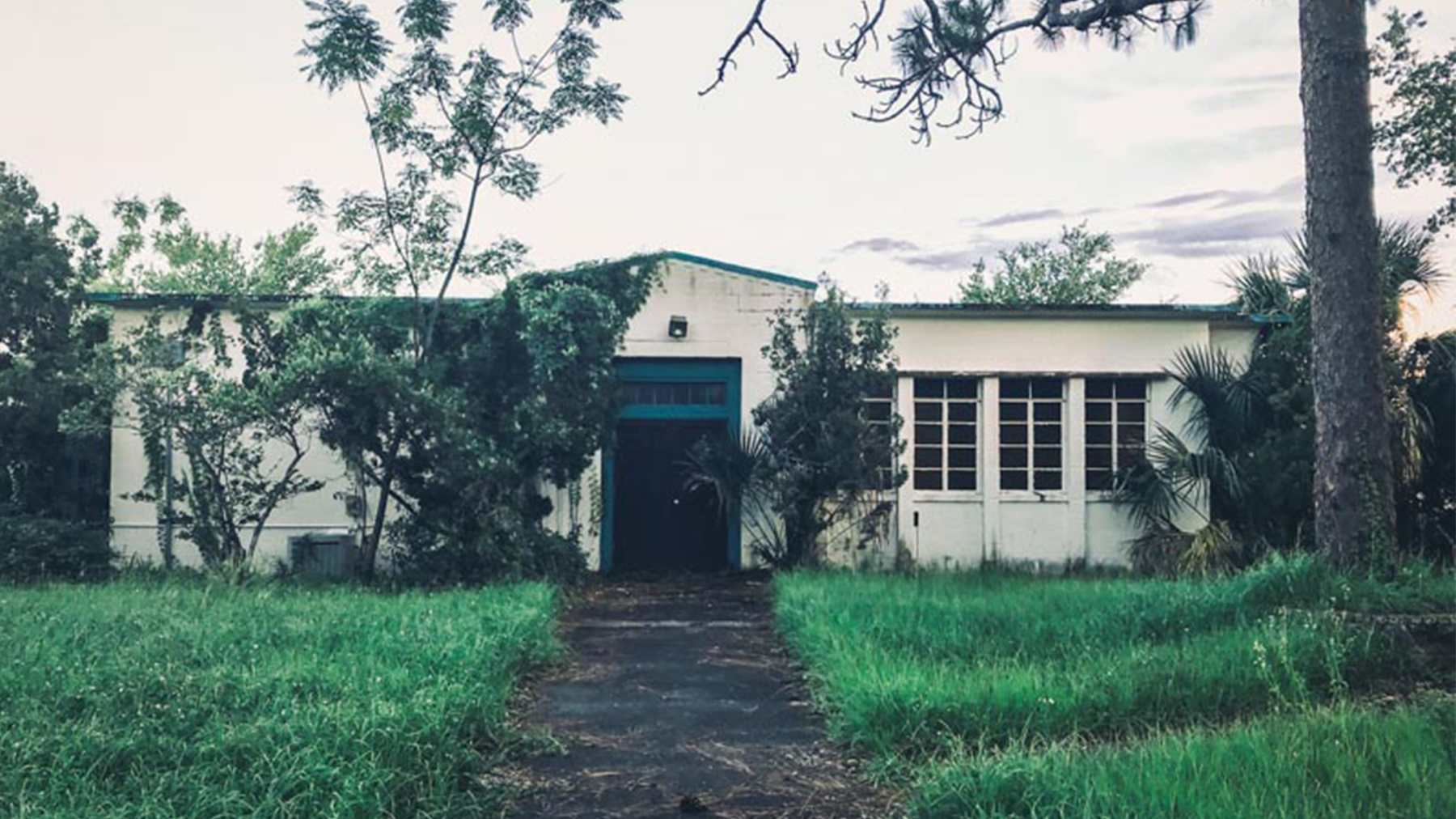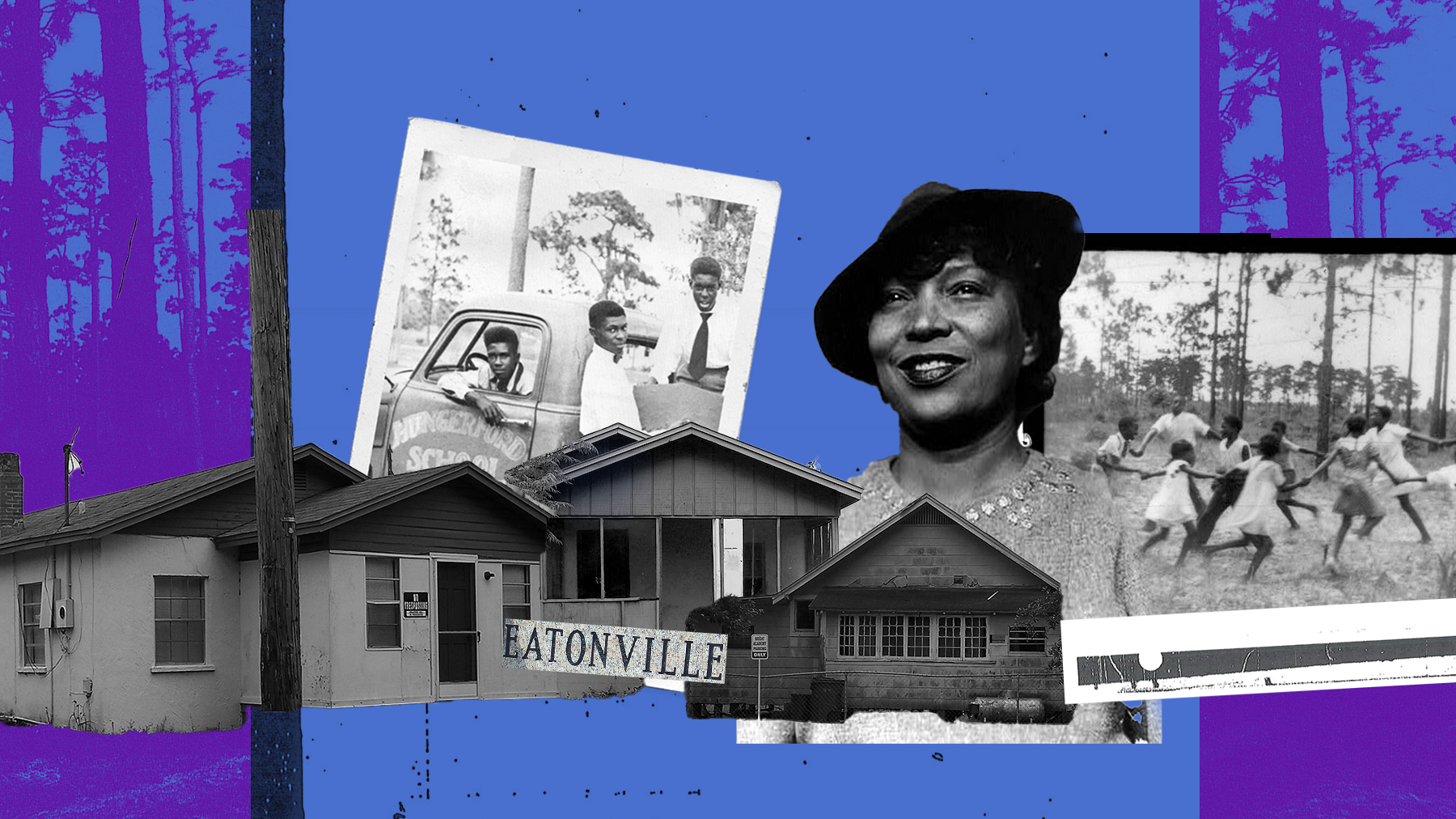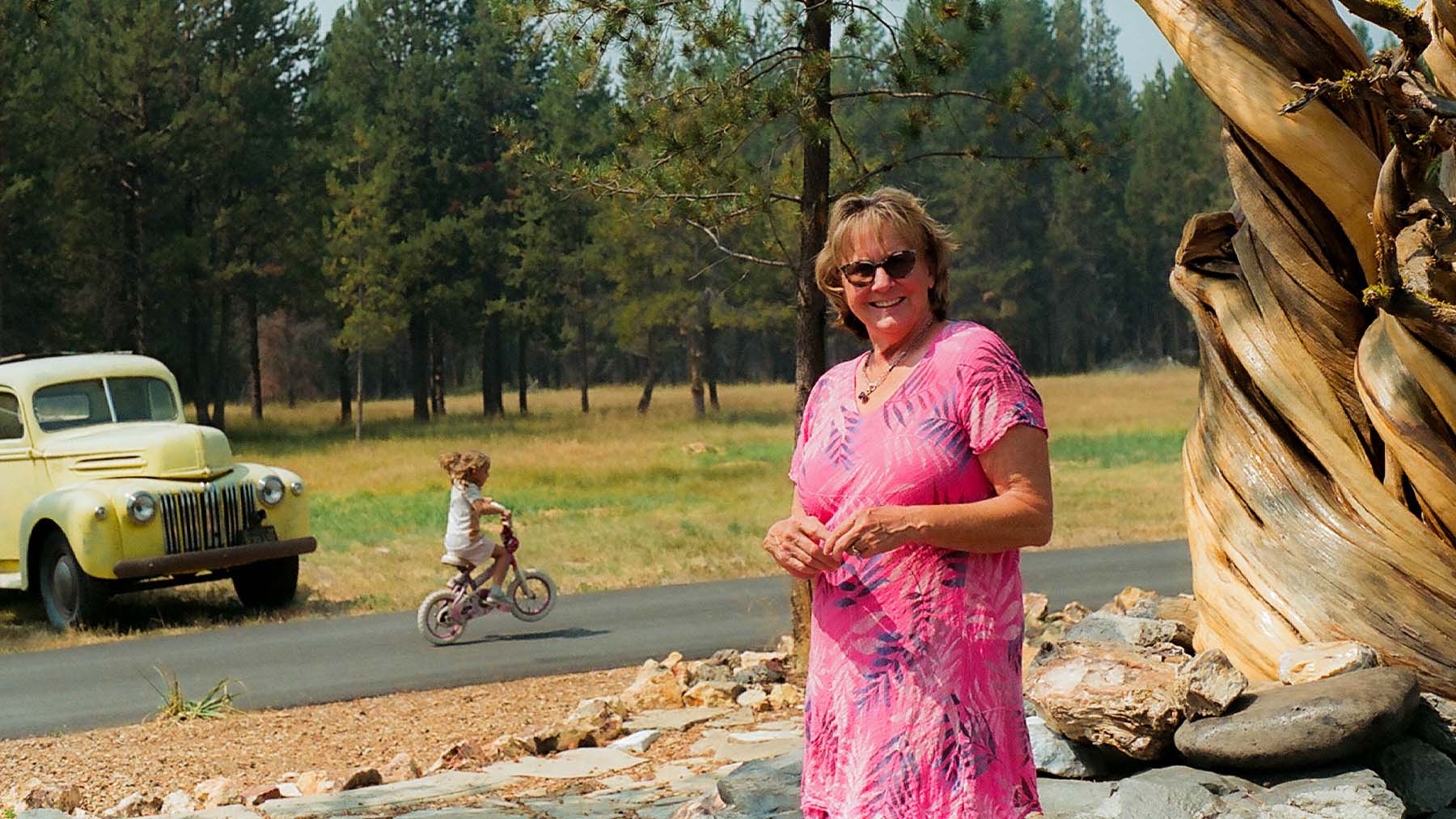When thousands of festivalgoers descend on Eatonville, Florida, this month to celebrate the legacy of literary giant Zora Neale Hurston they will, by their presence, honor the community dubbed “The Town That Freedom Built” for its proud history as one of the oldest incorporated Black communities in the U.S.
But while they are enjoying the annual festival that since 1990 has brought live music, literary symposia, theatrical productions and art exhibits to Eatonville, where Hurston grew up, the 135-year-old town will be on the brink of a decision that will determine its future.
On Feb. 7, just days after festival tents are dismantled, the town council could determine the fate of a massive development that, if approved, will reshape and – activists and historians fear – erase the legacy of Eatonville.
At stake is the fate of the Robert Hungerford Preparatory School property, where the leaders of Eatonville established a school in 1897 on about 300 acres. The school was modeled on Booker T. Washington’s Tuskegee Normal and Industrial Institute, now Tuskegee University, in Alabama. Attracting Black students from up and down the Eastern Seaboard, it was for generations the beating heart of a community where, in an era of Jim Crow and lynching, Black citizens managed to build, govern and maintain their own Black-majority town.
The Southern Poverty Law Center’s Economic Justice Project is working with the Association to Preserve the Eatonville Community (P.E.C.). The SPLC is supporting the P.E.C.’s efforts to ensure that the land is used in a way that benefits the community and safeguards its future.
“What we have done has been awakening the roots of Eatonville,” said Julian Johnson, a 29-year-old financial services professional who grew up in the town and returned to live there after college. Johnson said he stumbled on the development proposal when, interested in investing in the town, he attended a planning meeting.
“For too long, the descendants of the people who attended that school, who have roots in Eatonville, have felt voiceless. Now our story is getting out there, and our community is learning what’s going on and how they can be effective in the fight,” Johnson concluded.
Coalescing opposition
The proposal calls for building more than 300 residential housing units, both multi-family and single-family, along with extensive commercial, office and retail space, on a tract that makes up more than 15% of the 1.6-square-mile town that is 6 miles north of Orlando. Until now, even as surrounding communities in the booming area have been transformed by high-priced developments, Eatonville, where 73% of residents are Black, has retained its modest landscape of historic, wood frame homes.
The development plans came to fruition quietly during the height of the COVID-19 pandemic shutdown, largely unnoticed and unremarked. But in recent months, opposition to the proposal has coalesced. Eatonville residents have packed informational meetings sponsored by Mayor Angie Gardner in partnership with the P.E.C. Residents, including town elders, have taken the microphone to speak passionately about their memories of the town’s past and their fears for its future.
What’s more, activists have picketed outside the offices of the Orange County Public Schools (OCPS), which is seeking to sell the property to a development group for $14.6 million. In 1951, the school district purchased the Hungerford school property from the trustees who owned it, under a deed restriction that the school would continue to be used to educate Black children. The school district later sold off a portion of the property due to the construction of Interstate 4.
The remaining parcel retained the deed restriction until June 8, 2022, when it was released through a settlement agreement between the Town of Eatonville, OCPS, and the successor trustees of the Hungerford trust. Under the agreement, the school district agreed to pay $1 million to the Robert Hungerford Chapel Trust for the release of the deed restriction. However, under a 2019 sales contract, the school district agreed to sell the property to the town for $10 million plus the reimbursement of certain costs, including the $1 million for the deed release.
Now several citizens groups, comprising a broad range of Eatonville residents, are crying foul. They want the land to become home to a cultural, educational and tourism hub that would honor the history of the town, which is inextricably linked to the legacy of the original Robert Hungerford Preparatory School. Some of these citizens groups have established websites opposing the sale of the property, and more than 1,300 people have signed an online petition.
During the week after Christmas, citizen activists put up 60 yard signs emblazoned with “Landback!” on streets surrounding the Hungerford property and on Kennedy Boulevard, the town’s main street. Other groups are holding community meetings and planning protest events during the Hurston festival. Some activists marched in the town’s Martin Luther King Jr. Day parade. Opposition to the development has been the subject of news reports and has been circulating widely on social media. On Feb. 14, the most prominent historic preservation organization in Eatonville, the P.E.C., will hold the first of a series of community meetings on land development issues and the future of Eatonville.
‘Democracy in action’
In October, Johnson and two other Eatonville residents drove to Orlando with plans to speak out about the development of the Hungerford tract at a meeting of the OCPS Board. When they were not permitted to speak because they had not made arrangements in advance, they stood outside with placards.
“Save the Hungerford Property!” read one.
John Beacham, 64, carried a sign that read “Don’t let Eatonville down! Give back the land.”
A landscape contractor, Beacham was born and raised in Eatonville. He calls the plan to sell the Hungerford property “a disgrace.”
“That land was donated for the education of Black people only two decades after the end of slavery,” Beacham said. “I think the town council doesn’t know the whole story of Eatonville. They believe that OCPS owns the property, and they think OCPS is doing them a favor. But this is our land. This is land that we have a relationship with. This land was taken from us, and we want it to be given back. The way it was taken was predatory. The idea was to take the land from people they classified as just these uneducated Negroes. It’s about greed. It’s about economic injustice. It’s a kick in the face.”
The growing awareness stands in stark contrast to the moment the project first came before Eatonville’s town council in September. At that point, few Eatonville residents were aware that changes might be afoot for the old school property, long overgrown and shielded by chain link fencing. The land had stood quiet since 2009, when, amid falling enrollment, the school district closed Hungerford High School.
In 2020, the school board demolished the school building. Council members, all with deep ties to the town, were presented this past September with plans that appeared to promise economic revitalization. They were split on whether to approve the rezoning that paves the way for the development to move forward. Three members approved the measure, citing a concern that Eatonville’s economic development is being left behind amid a blistering real estate market. Two members, including the mayor, voted against it.
Since then, the founder and executive director of the P.E.C., N.Y. Nathiri, and others have worked hard to bring the details of the development proposal to light.
“The contract with the developer was the catalyst, it was the wake-up call in terms of the need to be much more proactive, much more aggressive in terms of protecting the town’s history and its future,” Nathiri said. “This is the quintessential democracy in action. People have been putting pressure on their elected officials. This is not a done deal.”
Historic roots
Last month, urged by residents to give the development proposal a closer look, the town council pushed back the second hearing on the measure, as well as amendments to its general comprehensive plan and zoning changes that are needed to clear the way for the plan to proceed. If there is a vote on the proposed zoning and comprehensive plan changes on Feb. 7 and that vote goes their way, developers could close on the contract with the school district by March 31.
Only a true awakening from the citizens of Eatonville can keep that from happening, said Vera King, 85, who has lived in Eatonville for most of her life. Born in the town, King attended the Hungerford school from eighth through 12th grade. As an adult, she worked as a bookkeeper, first for the school and then for the public school district, for 28 years.
King and her generation are a bridge to the Eatonville of memory. The town was one of 2,000 Black settlements founded in the U.S. in the years after the Civil War by newly emancipated people hoping to establish communities where they could thrive in relative safety. Products of excruciating discrimination and segregation, the settlements became, for their residents, centers of independence, self-worth and, in every sense of the phrase, the pursuit of happiness.
Of the settlements, fewer than 200 became all-Black incorporated communities with autonomous Black city governments. Eatonville, incorporated by 27 Black men in 1887, was one of the first. The establishment of the town was made possible in part by New York philanthropist Lewis Lawrence, who managed to bypass the reluctance of local white residents to sell to Black buyers by purchasing 22 acres from a friend and former captain in the Union Navy, Josiah Eaton. Lawrence subdivided the land into small, affordable lots and designated by deed that they be sold “to colored people only,” in accordance with the wishes of the Black buyers that the land become a center of Black self-government.
“Some of the things that the council is presenting and outsiders are presenting would soon make us fade away,” King said. “We are being closed in already by the businesses that are coming in. We don’t even have our own ZIP code. We are losing our identity and unless we get the community, including our council, going in the same direction, well, before long there will be no Eatonville. It will have been totally taken over, and the only thing left will be the memory.”
Those memories are strong to many of King’s generation. When they were growing up, Hurston, whose father was Eatonville’s third mayor, was already a legendary figure in the Harlem Renaissance, having written of the town’s founding through the eyes of her main character in her most famous novel, Their Eyes Were Watching God. The Robert Hungerford Preparatory School was a center of Black learning in Eatonville, and the town was home to a successful music club that hosted Black performers, including B.B. King, Duke Ellington, Cab Calloway and James Brown.
Eatonville is “a remarkably well-documented, historically Black township with ties to a major Black literary figure, and those two things together give it a major punch,” said Scot French, an associate professor of history at the University of Central Florida who has spent years studying the community. “All that I think is endangered by this development, because there is no effort being made to ensure that a sense of this great history, this gift, will be built into it. People are just tired. They don’t think enough attention has been given to the possibilities.”
Thinking big
Louise Franklin is 86. She grew up in the neighboring town of Maitland and walked 10 minutes through the woods every morning to get to the Hungerford school. She spent part of most Sundays in Eatonville, at the Methodist church she attended with her family.
In those days, Franklin said, she felt surrounded by people who looked like her and who shared her experiences.
“It was just a beautiful campus,” Franklin said. “There was a boys dorm, a girls dorm, a teachers dormitory. You felt good walking there. You felt good going walking under the trees. They had cows, the young boys they went out and planted a garden. Oh yes, we did everything the old-fashioned way.”
These days Franklin lives in Maitland with her niece in a home her parents bought after the house she grew up in was destroyed by a hurricane.
“I’m just so sorry this is happening,” Franklin said of the proposed development. “I’m so disappointed that it came about.”
This isn’t the first threat to Eatonville’s existence. In 1987, a planned highway widening would have cut five lanes of pavement right through the center of town. The widening was scuttled after Nathiri, a former university librarian and community college writing teacher who had been raised in Eatonville, rallied residents against it, founding the preservation organization where she is now executive director. Kennedy Boulevard, which runs through the heart of Eatonville, remains a two-lane road.
Soon after, Nathiri helmed efforts not only to preserve the town but to gain recognition of its historic significance. In January 1990, the first Zora Neale Hurston Festival of the Arts and Humanities (ZORA! Festival) attracted more than 10,000 people to lectures, an art exhibition and an outdoor festival. It has been the cultural centerpiece of the town ever since.
These days, Nathiri is trying to get town leaders to think big again. Instead of ceding the Hungerford property to developers, she envisions the creation of a Zora Neale Hurston Campus for the Arts, Humanities and the Sciences, where instead of condos and franchise stores, cultural heritage tourists would bring vitality – and resources – to the town.
‘Bought out, shut out’
About 130 miles from Eatonville, a state historical marker stands where a place named Rosewood once thrived. Like Eatonville, Rosewood was a middle-class, predominantly Black town proud of its history. A century ago, in January 1923, it was wiped out, burned to the ground by white townspeople from surrounding communities, its Black men, women and children either murdered or forced to flee.
On a recent day, John Anderson, 83, was thinking about Rosewood, and about Eatonville.
Anderson grew up on the Hungerford property, a quiet, studious boy whose parents taught at the Hungerford Preparatory School. While other boys were shooting marbles, he recalled, he was home with his books. Anderson graduated at 15 from high school and at 19 from college. He served in the U.S. Army and worked for years in city government in Washington, D.C. Now he lives in Rockledge, Florida, about 60 miles east of Eatonville.
From his vantage point, Anderson says, it is apparent that Eatonville faces a threat to its very existence.
“You look at Rosewood. All that is left of Rosewood is that marker,” Anderson said. “Rosewood got burnt to the ground and Eatonville still survives. There is enough money and there is enough spirit to help preserve Eatonville if it is done right.”
If not?
“Eatonville will be wiped out,” Anderson said. “Because people want that land. It will be just another bump in the road. It will have the same stores and the same houses as everywhere around it, and new people will come in and they will elect who they want to elect. Eatonville will be forgotten, bought out, shut out, unless someone who has the staying power is willing to fight for it.”
Picture at top: A proposed development in Eatonville, Florida, threatens to erase the town’s legacy as one of the oldest incorporated Black communities in the U.S. “Some of the things that the council is presenting and outsiders are presenting would soon make us fade away,” says Vera King, 85, who was born in Eatonville. (Credit: Alfonso Duran)



